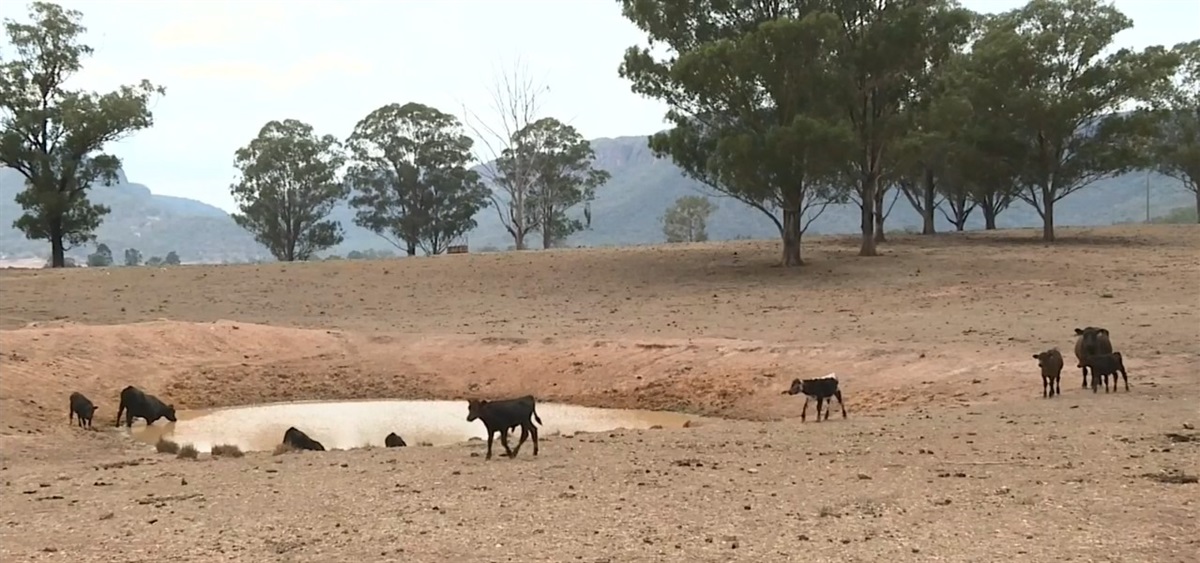Results at a glance:
■ Rural sentiment has again retreated in Qld, as drought continues to batter the southern half of the state
■ Sugar was the only commodity to show an improvement in sentiment, despite being at a subdued level
■ Investment intentions remain steady as producers ‘wait and see’ what the season brings
Confidence among Queensland’s agricultural producers has once again waned as drought conditions wear on, the latest quarterly Rabobank Rural Confidence Survey has shown.
With the small rise in confidence recorded last quarter proving to be a false start, sentiment in the state’s farm sector slumped back with two-in-five of the state’s primary producers reporting a negative outlook on the agricultural economy for the year ahead.
The latest survey, completed last month, found net rural confidence across all Queensland regions is now in negative territory – with more producers reporting a pessimistic, than optimistic, outlook on the year ahead. Those in the Darling Downs had the lowest sentiment.
Overall, the number of Queensland producers holding a pessimistic view on agricultural economic conditions increased this quarter to 40 per cent, from 34 per cent in the previous survey.
Those expecting stable conditions fell back to 30 per cent (from 37 per cent previously) while 19 per cent of respondents in the state still reported a positive outlook (the same reading as last quarter).
Rabobank regional manager for Southern Queensland and Northern New South Wales Brad James said the need for rain, particularly in the Darling Downs, was getting to a critical level.
“Usually at this time of year you would be driving past fields of green winter crops in the Darling Downs,” he said.
“But right across commodity sectors, producers are feeling the effects of the dry with minimal fodder and critically-low dam levels while cultivators have little or no moisture profile to work with. And cotton growers either have no moisture if they’re dryland or no allocation if they’re irrigators.”
While sentiment was subdued across all regions, it was worst in the Darling Downs where almost half (49 per cent) of surveyed producers said they were expecting conditions to decline further, and only eight per cent were anticipating an improvement.
Mr James said the Central Highlands and Central Coast had also been experiencing very dry conditions, with 39 per cent of farmers in that region reporting a negative outlook on the year ahead
“Rainfall across the central part of the state has been incredibly patchy,” he said.
“While there has been some wheat and chickpea planted, the in-crop rain has been minimal, and yields are likely to be a fraction of the region’s capability.”
After improving in the previous quarter, sentiment in the Channel Country has also retreated with 35 per cent now expecting worsening conditions.
“Rainfall and substantial flows from the north-west Queensland February flood event buoyed sentiment in the Channel Country last quarter, however there has again been little follow-up rain and not much in the forecast,” Mr James said.
“I was fortunate enough to fly over the Channel Country recently and see for myself the region in flood and it was incredibly impressive.
“It was encouraging to see that there has at least been some benefit further down the chain from the dreadful events earlier this year.”
North Queensland was the only region to show an improvement in sentiment this quarter, with its producers the most positive in the state, although sentiment still remains at subdued levels.
Across the board, drought was, unsurprisingly, front-of-mind for Queensland’s primary producers with 79 per cent citing it as primary reason for their pessimistic outlook – particularly grain and beef producers, with 90 per cent and 92 per cent respectively concerned about the dry season.
Overall confidence fell sharply in the grains sector, with 59 per cent (26 per cent previously) now expecting conditions to worsen over the coming 12 months.
Only eight per cent of grain growers now believed conditions would improve. This was down from 23 per cent the previous quarter.
Confidence also fell back in cotton, albeit to a lesser extent, with 47 per cent now expecting conditions to deteriorate (from 42 per cent) and 25 per cent expecting little change in current conditions.
In beef, confidence also edged lower, however 24 per cent of beef graziers are still confident of an improvement in the year ahead.
Sugar was the only commodity to show an improvement in confidence this quarter, but remains subdued with more than double the amount of cane farmers expecting conditions over the coming year to deteriorate (46 per cent) rather than improve (19 per cent).
“The sugar cane price climbed a bit earlier on in the quarter but has struggled to hold on,” Mr James said. “Rabobank is now forecasting a narrow trading range of $410 a tonne for this quarter (Q3 2019) and up around $430 a tonne in the first quarter of 2020.”
When it came to Queensland producers’ expectations for their own gross farm incomes, this was largely in line with overall confidence levels, and had edged lower with producers equally split (at 39 per cent) as to whether their incomes were likely to decline or remain similar to 2018/19.
The number expecting an improvement in their incomes eased back slightly to 15 per cent, from 18 per cent the previous quarter.
In terms of investment appetite, there was very much a ‘wait and see’ approach this quarter with the majority of the state’s farmers (66 per cent) intending to maintain investment in their agricultural businesses at current levels and only 15 per cent seeking to increase investment.
Appetite for investment was stronger though among larger farm businesses (those with gross farm incomes exceeding $1 million), with 41 per cent intending to increase investment, particularly focused on water/irrigation infrastructure.
The Rabobank Rural Confidence Survey questions an average of 1000 primary producers across a wide range of commodities and geographical areas throughout Australia on a quarterly basis and is a comprehensive monitor of outlook and sentiment in Australian rural industries. As the most robust study of its type in Australia, the Rabobank Rural Confidence Survey has been conducted since 2000 by an independent research organisation. The next results are scheduled for release in December 2019.








